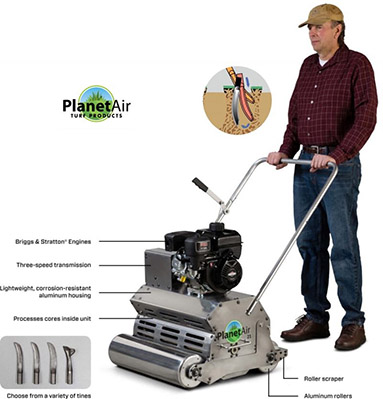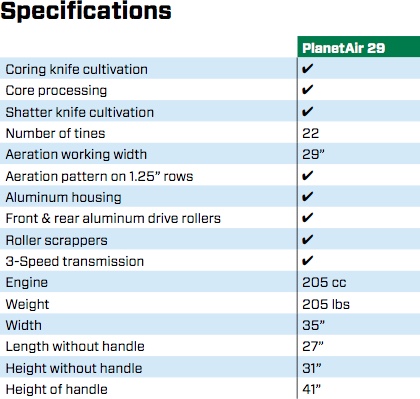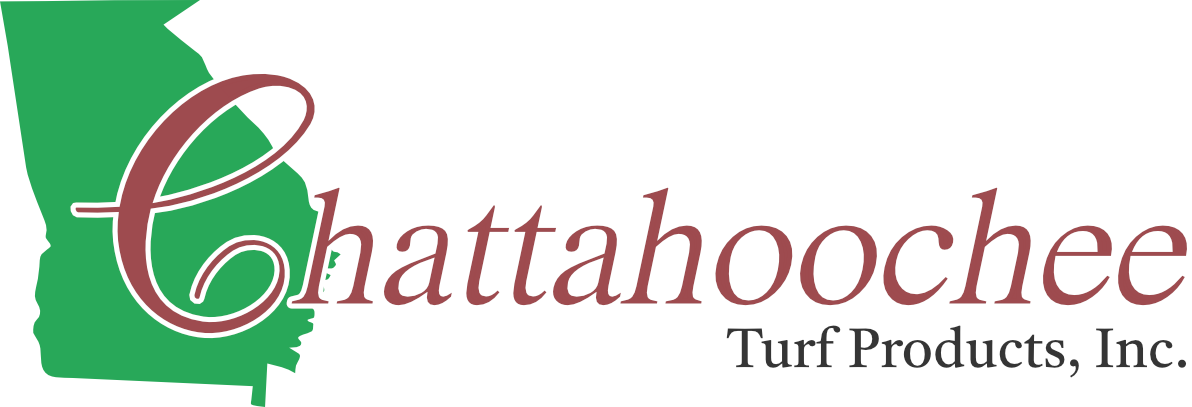

Introducing the PlanetAir 29 Aerators: An Innovative 29-Inch Walk-Behind Turf Aerator
The PlanetAir 29 is a game-changing, low-cost, walk-behind turf aerator designed to revolutionize lawn care. With its 29-inch width and innovative features, this aerator is engineered for both efficiency and performance. By simply swapping tines, the PlanetAir 29 can perform two critical aeration functions: creating deep vertical cuts or pulling soil cores, which are then processed within the machine itself for added convenience.
Key Features of the PlanetAir 29 Aerator
- Patented Planetary Gear Drive System
- The unique planetary gear drive system creates a small incision while stirring soil beneath the surface. This results in minimal disruption to the lawn’s surface while delivering optimal aeration benefits.
- Lightweight and Corrosion-Resistant Construction
- Built with a durable yet lightweight aluminum housing, the PlanetAir 29 is highly resistant to corrosion, ensuring longevity and reliability.
- Compact and Portable
- Its compact design makes it easy to transport, allowing you to respond quickly to customer demands or use it for personal lawn care needs.
- Self-Propelled Operation
- Featuring a low-maintenance, three-speed transmission, the PlanetAir 29 Aerator is self-propelled for effortless operation, saving time and energy.
- Cost-Effective and High-Performance
- As a budget-friendly option, the PlanetAir 29 delivers exceptional performance with a fast return on investment, making it ideal for both residential and commercial use.
Understanding Lawn Aerator: Why Aeration Matters
Lawn aeration plays a vital role in maintaining healthy, lush grass by reducing soil compaction and controlling lawn thatch. Aeration stimulates grass root growth, which leads to a thicker, healthier lawn. When you aerate the soil—either by coring or spiking—you cause the grass roots to divide. This process, which rarely occurs naturally, encourages the roots to multiply, resulting in dense, deeply rooted grass that can better withstand environmental stress.The Role of Lawn Thatch
Lawn thatch is a layer of dead organic material that rests on top of the soil. While a thin layer of thatch can help moderate temperature and reduce evaporation, excessive thatch can suffocate the grass by limiting soil oxygenation and reducing water absorption. Aeration helps break down excessive thatch, promoting a healthier lawn.Combatting Soil Compaction
Compacted soil prevents grass from developing long, robust roots. It also hinders the effectiveness of both natural rainfall and artificial irrigation. Aeration alleviates compaction, allowing air, water, and nutrients to penetrate the soil and reach the roots.Core Aeration vs. Spike Aeration: Which Is Right for You?
- Core (Plug) Aeration:
- Removes small soil plugs (or cores) from the ground and deposits them on the turf.
- Reduces soil compaction effectively.
- Keeps holes open for extended periods, allowing better absorption of water, air, and fertilizer.
- Ideal for heavy clay soils.
- Spike Aeration:
- Uses wedge-shaped spikes to create holes by pushing the soil sideways.
- Does not remove soil, so the compacted ground around the holes tends to close after watering.
- More suitable for sandy or loamy soils.
Powered Aerators vs. Manual Aerators: Efficiency vs. Economy
- Powered Aerators:
- Use engine power and ground propulsion to drive tines into the soil, allowing for quick and efficient aeration of large areas.
- Operate at a speed comparable to lawn mowing, making them ideal for commercial landscapers or homeowners with large lawns.
- Manual Aerators:
- Typically feature two to five hollow tines mounted on a step bar. The user steps down on the bar to penetrate the soil and lifts to remove the soil cores.
- While significantly more affordable, manual aerators are labor-intensive and time-consuming, particularly for larger lawns.
- Well-made manual aerators offer the advantage of precision, allowing for selective aeration and greater control over the process.
